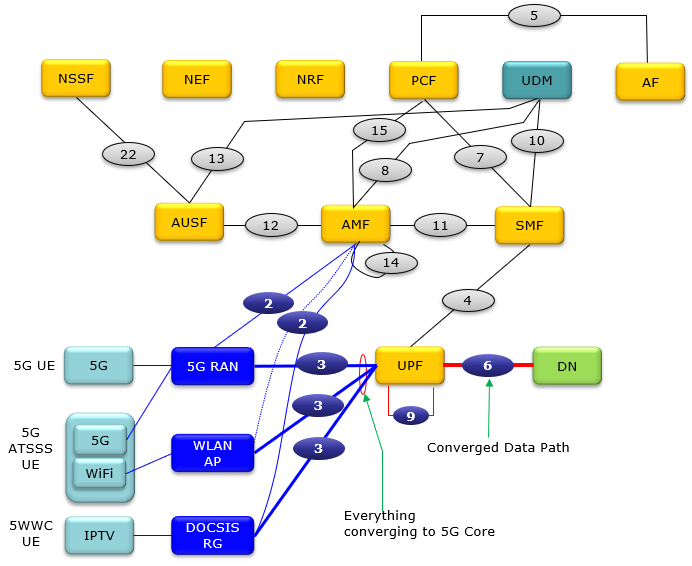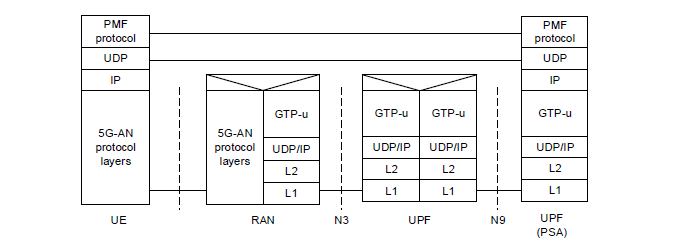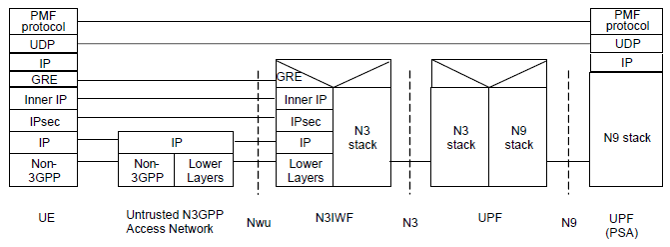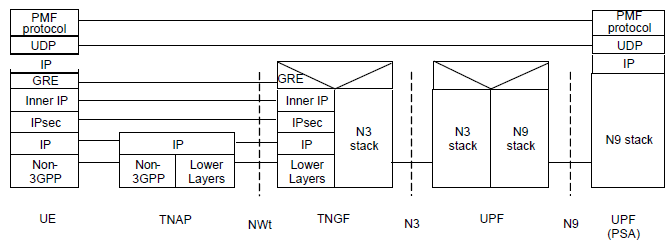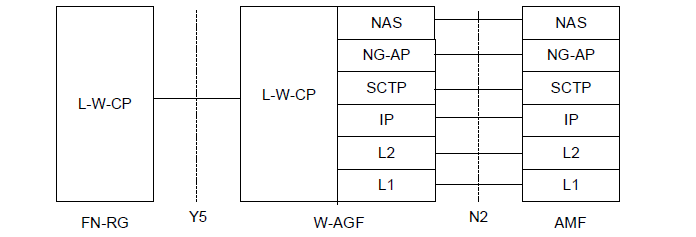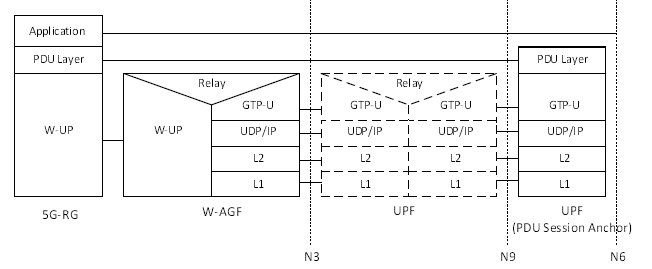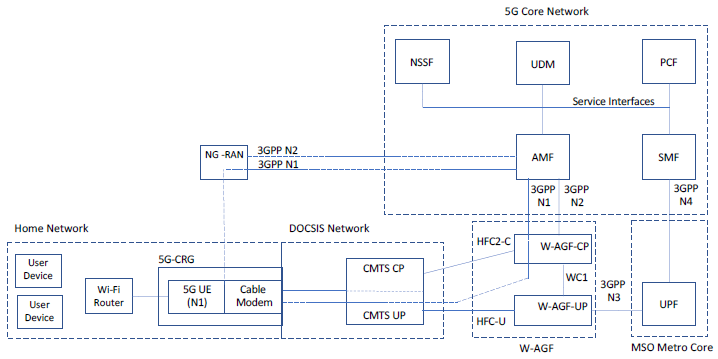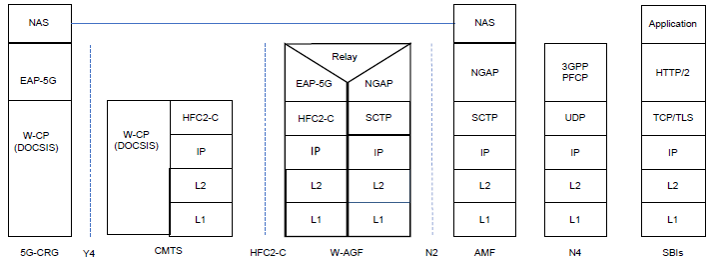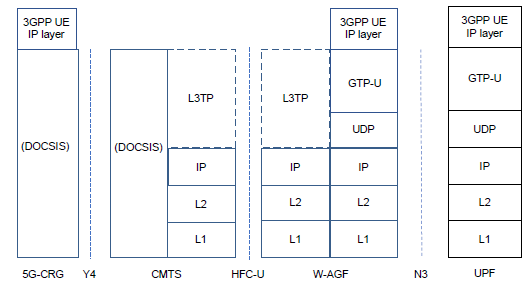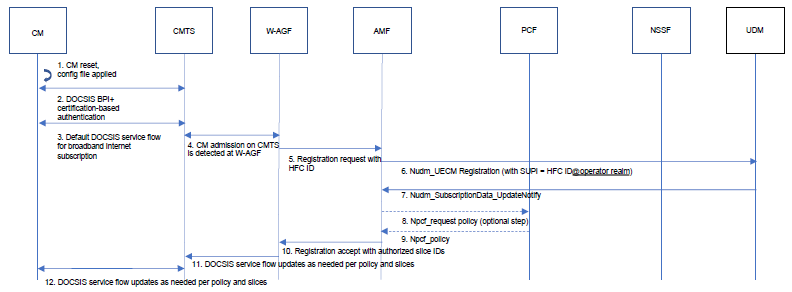|
5G/NR - Converged Connectivity |
||
|
Converged Connectivity - ATSSS/5WWC
Converged Network is a collective name for various technologies to utilize 5G core network for the data path (and some control plane in some cases) of non 3gpp communication as illustrated below. Final goal is to converge the core part of existing non-3gpp technology (e.g, WiFi or IPTV etc) to UPF / DN and in some cases use 5G AMF as well for the control plane.
Whatever the existing technology to be the candidate for the Converged Connectivity, all of them has the same goal, that is, getting connected to 5G UPF. However they need to develop different gateway that translate their existing access protocols to fit into 5G standard interfaces (N3, N9, N2). Not only for the standard interfacing, each of the technology (candidates) would employ additional technologies to faciliate further the combined connection of 5G and non-3GPP network.
ATSSS
ATSSS stands for Access Traffic Steering, Switching and Splitting. To me, ATSSS looks to be an envolved version of WiFi Offloading/ePDG that we used in LTE. What has been evolved in ATSSS comparing to WiFi Offload ? As the name implies, ATSSS can support much diverse technology to managing / coordinating data flow to increase throughput, robustness and reliability of the data traffic. In WiFi Offloading, only one possible scenario of data transfer was possible between 4G (3GPP) and WiFi (non 3GPP). It was one or the other, i.e, flowing data through LTE or WiFi. However in ATSSS, more diverse scenario is possible.
To best use of this kind of capability, the device (and/or server) should support specical IP protocol called MPTCP (Multi Path TCP), implying that the success of ATSSS would depend on how soon MPTCP will be employed by various servers and UE IP stack.
Formal description of ATSSS is well summarized in 23.501 - 5.32.1 as follows. But the details of ATSSS is scattered around the whole 23.501.
The ATSSS feature enables a multi-access PDU Connectivity Service, which can exchange PDUs between the UE and a data network by simultaneously using one 3GPP access network and one non-3GPP access network and two independent N3/N9 tunnels between the PSA and RAN/AN. The multi-access PDU Connectivity Service is realized by establishing a Multi-Access PDU (MA PDU) Session, i.e. a PDU Session that may have user-plane resources on two access networks. This assumes both 3GPP access and non-3GPP access are allowed for the S-NSSAI of the PDU Session.
The overall structure of protocol stack of ATSSS are depicted in 23.501 as shown below. As you see, the UE side protocol stack is very similar to ePDG stack for LTE / WiFi offloading and I think N3IWF of ATSSS is equivalent to ePDG of WiFi Offload. Via N3IWF, the protocol is converted to 5G standard interface protocl N3 and eventually reaches 5G data plane UPF.
< 23.501-Figure 5.32.5.4-1: UE/UPF measurements related protocol stack for 3GPP access and for an MA PDU Session with type IP >
< 23.501-Figure 5.32.5.4-2: UE/UPF measurements related protocol stack for Untrusted non-3GPP access and for an MA PDU Session with type IP>
< 23.501-Figure 5.32.5.4-3: UE/UPF measurements related protocol stack for Trusted non-3GPP access and for an MA PDU Session with type IP >
5WWC
5GWWW is for converging Cable Modem based IP service (e.g, IPTV) to 5G core network and 5G data path. Since the type of DUT (assuming IPTV type of DUT) would not require much of interplay with 5G network, it wouldn't propose diverse type of flow control between non 3GPP and 3GPP data path, but 5WWC seems to pay more attenation to C Plane as well as U plane. With converging to 5G C plane core, it would be able to do subscriber management with 5G core.
< 23.316-Figure 6.2.2-1: Control Plane stack for W-5GAN for FN-RG>
< 23.316-Figure 6.3.1-1: User Plane stack for W-5GAN for 5G-RG>
< 23.316-Figure 6.3.2-1: User Plane stack for W-5GAN for FN-RG >
< WR-TR-5WWC-ARCH-V03-200618 : Figure 4 - Integration Model Control Plane Protocol Stacks for 5G Converged Network Architecture>
< WR-TR-5WWC-ARCH-V03-200618 : Figure 5 - User Plane Protocol Stacks for 5G Converged Network Architecture>
< WR-TR-5WWC-ARCH-V03-200618 : Figure 9 - High-Level Cable Modem Registration Message Flow >
Reference
|
||
